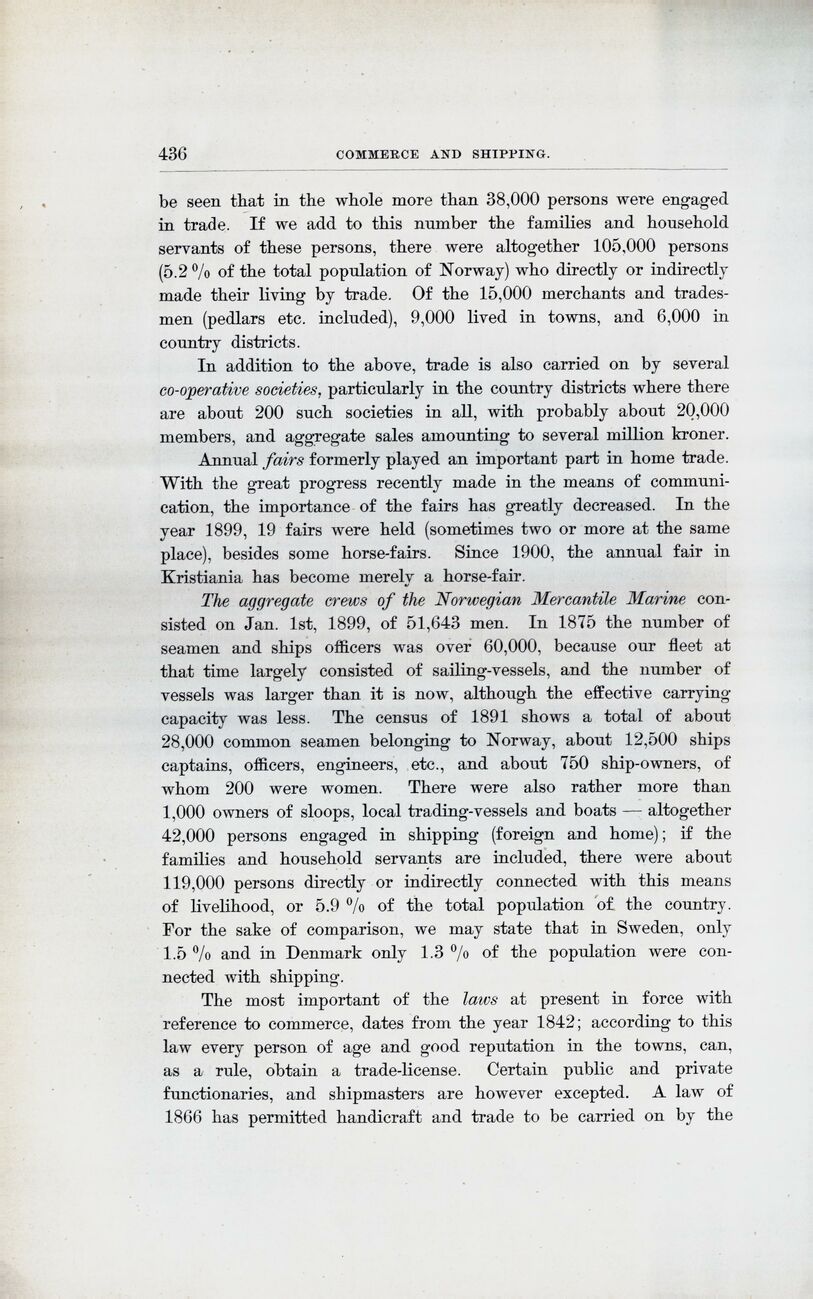
Full resolution (JPEG) - On this page / på denna sida - Commerce and Shipping, by A. Th. Klær

<< prev. page << föreg. sida << >> nästa sida >> next page >>
Below is the raw OCR text
from the above scanned image.
Do you see an error? Proofread the page now!
Här nedan syns maskintolkade texten från faksimilbilden ovan.
Ser du något fel? Korrekturläs sidan nu!
This page has been proofread at least once.
(diff)
(history)
Denna sida har korrekturlästs minst en gång.
(skillnad)
(historik)
be seen that in the whole more than 38,000 persons were engaged
in trade. If we add to this number the families and household
servants of these persons, there were altogether 105,000 persons
(5.2 % of the total population of Norway) who directly or indirectly
made their living by trade. Of the 15,000 merchants and
tradesmen (pedlars etc. included), 9,000 lived in towns, and 6,000 in
country districts.
In addition to the above, trade is also carried on by several
co-operative societies, particularly in the country districts where there
are about 200 such societies in all, with probably about 20,000
members, and aggregate sales amounting to several million kroner.
Annual fairs formerly played an important part in home trade.
With the great progress recently made in the means of
communication, the importance of the fairs has greatly decreased. In the
year 1899, 19 fairs were held (sometimes two or more at the same
place), besides some horse-fairs. Since 1900, the annual fair in
Kristiania has become merely a horse-fair.
The aggregate crews of the Norwegian Mercantile Marine
consisted on Jan. 1st, 1899, of 51,643 men. In 1875 the number of
seamen and ships officers was over 60,000, because our fleet at
that time largely consisted of sailing-vessels, and the number of
vessels was larger than it is now, although the effective carrying
capacity was less. The census of 1891 shows a total of about
28,000 common seamen belonging to Norway, about 12,500 ships
captains, officers, engineers, etc., and about 750 ship-owners, of
whom 200 were women. There were also rather more than
1,000 owners of sloops, local trading-vessels and boats — altogether
42,000 persons engaged in shipping (foreign and home); if the
families and household servants are included, there were about
119,000 persons directly or indirectly connected with this means
of livelihood, or 5.9 % of the total population of the country.
For the sake of comparison, we may state that in Sweden, only
1.5 % and in Denmark only 1.3 % of the population were
connected with shipping.
The most important of the laws at present in force with
reference to commerce, dates from the year 1842; according to this
law every person of age and good reputation in the towns, can,
as a rule, obtain a trade-license. Certain public and private
functionaries, and shipmasters are however excepted. A law of
1866 has permitted handicraft and trade to be carried on by the
<< prev. page << föreg. sida << >> nästa sida >> next page >>